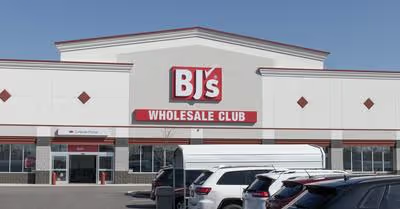Table of Contents
“When workers think about what retirement will be like, they often imagine it as a single monolithic event -- as if they can pursue their favorite activities every day until their last. But in reality, retirement is a three-stage event, and for most retirees, each stage is considerably different.”
In this post, you will learn:
- the pros and cons of both staying put and moving in the first phase of retirement,
- the different types of retirement communities and services available once it’s time to settle down,
- the types of communities and services available when long-term care is appropriate, and
- the average costs associated with each choice of where you will spend your retirement.
Staying Put or Moving in Retirement
According to the 2018 Home and Community Preferences survey by AARP, more than six in ten adults participating in the survey stated that they wanted to remain in their community and current residence, if possible. A full 80% of participants who were age 50 and older wanted to stay in their community and current home, if possible. However, only 50% of participants believed they would be able to do so.
On the other hand, the freedom and time you have to move to your favorite beach, the mountain escape you’ve been eyeing, or going all exotic and moving outside the country is one of the great benefits of retirement. And, there’s certainly no better time to do your exploring than in the early years of retirement. And, who says you can’t do both?
Before you decide on, “should you stay or should you go,” do some research and compare how staying put and moving will impact the most important needs you will have in phase one and as you move deeper into your requirement years.
1. Retirement savings
2. Quality of life
3. Social network
4. Family
5. Healthcare costs
6. Availability of the same level of benefits
7. Access to quality healthcare
Independent Living Communities
Independent living communities (ILCs) are communities for active, healthy seniors who can live on their own. They offer a variety of housing options ranging from single family homes to mobile and motor homes. You have the choice of owning or renting. These communities offer a range of services depending upon the type of community you choose. At a minimum, building and grounds maintenance, and security services are provided.
ILCs are age-restricted and provide child-free environments. They are typically governed by a private company, non-profit organization, government agency, or the residents themselves. Be sure to ask about bylaws and other rules governing the residents in the community and be sure you will be willing to live within them. Some can be quite onerous.
Senior apartments.
Senior apartments are the most common type of independent senior housing.
Amenities. Meal services, transportation, social events
Cost. Costs vary widely depending upon the level of amenities offered and the regional price differences. The average cost of a one-bedroom apartment could range from $1,500 to $3,500 per month.[2]
55 + Communities
An age-restricted community is one that requires at least one person living in 80% of the units to be age 55 or older. These communities focus on providing privacy and independence.
Housing. Single-family houses, townhomes, condos, and apartments
Amenities. These communities are leisure-oriented, often built around activities such as golf and tennis. Amenities may include:
· golf club, restaurant, and pool
· walking trails
· tennis courts
· hobby or learning centers.
Cost. Will align with the local real estate and rental markets. Additional costs may include HOA fees and golf/tennis club memberships.
Senior cooperative housing
Active 55 and older residents own a share of the community with an equal voice in how it's run. The tax benefits of home ownership are there but without the hassle of home upkeep. This makes an ideal transition from long-time homeownership to a more maintenance free life.[3]
Housing. Same as other age-restricted communities.
Amenities. Same as other age-restricted communities.
Cost. Becoming a resident and shareholder requires two costs: a one-time share cost (down payment) and a monthly fee. The share cost can be significant, usually 20% to 40% of the unit's value. Typical unit prices range from $100,000 to $225,000+.[4]
Paying for Independent Living
Personal income is the most common payment source for ILCs. For low-income seniors, extra funds might be available through rent subsidy programs. Active adult communities generally cannot accept payment sources that commonly fund nursing home care and assisted living (e.g., Medicare, Medicaid, and long-term care insurance).
Assisted Living
Assisted Living communities are designed for people who need help with a few activities of daily living, such as bathing, dressing, cooking, or remembering to take medication. Residents live in private rooms or apartments, meals are provided, and nursing staff or nursing assistants check on residents each day.
Services. Typical services include:
- 24-hour supervision and assistance
- exercise, health and wellness programs
- housekeeping and maintenance
- meals and dining services
- medication management or assistance
- personal care services (such as Activities of Daily Living [ADLs])
- transportation
Cost. The average median cost for an assisted living apartment in the United States is about $4,000 per month, and the majority of residents are age 85 and older.
Finance. The majority of assisted living residents use some form of private pay (e.g., long term care insurance, personal finances) to cover the cost of their assisted living services.[5]
Special Needs. If you or your loved one have memory, intellectual and physical disabilities, or some other form of medical condition, be sure to ask whether the assisted living community you are considering can meet those needs. Further, make sure to ask about the types of healthcare services available onsite and/or in proximity.
Resource: National Center for Assisted Living (NCAL)
Continuing Care Retirement Communities (CCRC)
CCRC communities are designed for healthy people who are looking for security as they “age-in-place.” This type of community is different from other housing and care options for older people because it offers a long-term contract that provides independent living, and skilled nursing care, usually all in one location.
CCRCs require a large financial commitment, so be sure to do your homework, ask good questions, take a field trip, and seek your accountant’s and lawyer’s advice before proceeding.
Additional Considerations. There are a few things to keep in mind as you consider CCRCs as an option for you or a family member.
1. Contracts. You will sign a contract for the agreed upon term, housing, and health services. Contract terms range from a minimum of one year to the balance of your life. This agreement guarantees you access to health care for the term of the contract.
2. Eligibility. You must be capable of independent living when you move in.
3. Accreditation. Ask if the community you are considering is accredited. Go to CARF International to confirm its accreditation.
4. License. Ask if the CCRC is subject to licensure and request a copy of the most recent inspection report.
5. Services. Find out about the kinds of services offered and which of those services are included at no additional cost, and which are available for an additional fee.
6. Fees. Be sure you understand the fee structure and payment schedule.
7. Professional guidance. Finally, seek the advice of your accountant and lawyer before signing a contract.
Amenities and Services
Services and amenities include:
· single-family housing, apartments, and condominiums
· health care services
· meals
· personal care
· housekeeping
· transportation
· emergency help
· social and educational activities
Cost. According to the CCRC database at https://www.myLifeSite.com, average entry fees range from approximately $107,277 on the low end to $427,054 on the high end (across a blend of contract types). Average monthly service fees range from $2,089 to $4,154.[6]
Finance. The resident pays 100 percent of the [non-medical care] cost, out-of-pocket. Medicare will not be involved unless:
1. there are doctor visits, a hospital stay, or expenses related to skilled nursing care[7] in the on-site healthcare center, and
2. the healthcare center is Medicare-certified.[8]
For additional information regarding providers in your area, the types of contracts available, the financial investment required, and CCRC fee structures, go to the Resources section of the CARF website.
Resource: Commission on Accreditation of Rehabilitation Facilities (CARF)
Nursing Homes
A nursing home provides nursing care for the elderly around-the-clock and 24-hour medical care. This type of care may also be referred to as skilled nursing or convalescent care. These facilities provide a wide range of personal care and health services.
Services. Nursing homes focus on medical care more than most assisted living facilities. These services typically include:
· nursing care
· 24-hour supervision
· three meals a day
· assistance with everyday activities
· rehabilitation services (physical, occupational, and speech therapy)
Cost. Costs vary by state, provider, length of stay, and whether the resident has special needs. Many facilities have all-inclusive rates, but some do charge extra for services beyond housing, food, and housecleaning, such as expenses associated with physical therapy, speech therapy, memory care, etc.
On average beneficiaries in the United States can expect annual costs to average:
Semi-private room: $89,297
Private room: $100,375
Finance. Residents use a variety of funding sources to pay for nursing home care (personal funds, government programs, and private financing options.)
Getting Started
There is a plethora of information and choices to consider when you begin planning for your retirement. We have provided links to resources we used for this post, but there is much more information at these links that can be helpful to you. So, check those out. And, happy planning!
[1] https://www.fool.com/retirement/2017/08/16/the-3-phases-of-retirement-and-how-to-plan-for-the.aspx
[2] https://www.seniorliving.org/independent-living/
[3] https://www.seniorliving.org/cooperative-housing/
[4] ibid
[5] Low-income individuals may be able to utilize Medicaid to help cover the cost of services, depending on their state's Medicaid program. Approximately 16.5% of assisted living residents rely on Medicaid to cover their assisted living services.
[6] (Information updated: June 28, 2018).
[7] Skilled nursing is a term that refers to a patient's need for care or treatment that can only be done by licensed nurses. ... Examples of skilled nursing needs include complex wound dressings, rehabilitation, tube feedings or rapidly changing health status.
[8] https://www.mylifesite.net/blog/post/medicare-continuing-care-retirement-communities-ccrcs/
Recent Articles
















